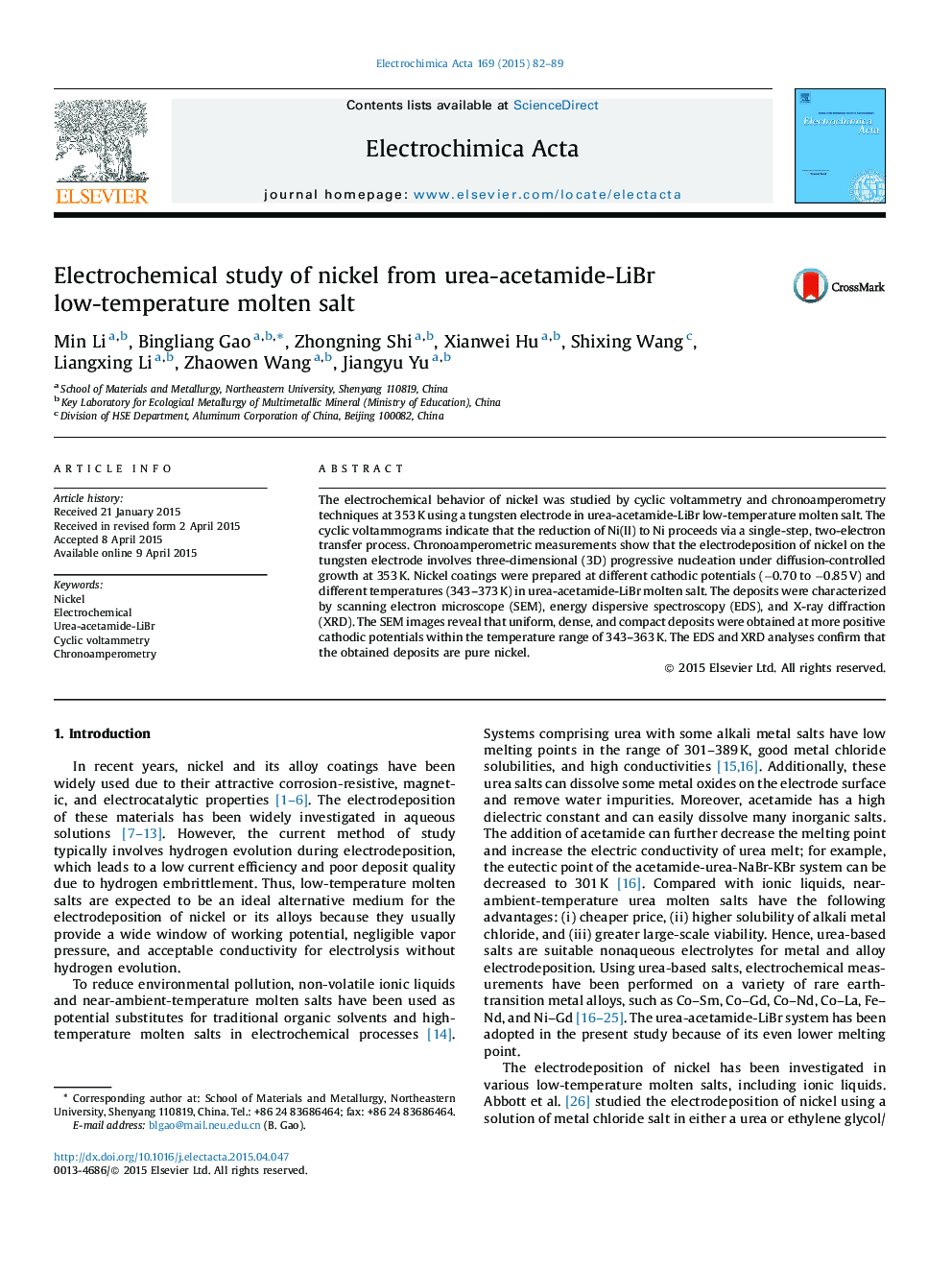| Article ID | Journal | Published Year | Pages | File Type |
|---|---|---|---|---|
| 184097 | Electrochimica Acta | 2015 | 8 Pages |
•CV results show that the charge transfer process of Ni(II)/Ni in urea-acetamide-LiBr is irreversible.•The reduction process is a single step two-electron transfer process.•Chronoamperometry indicates that the reaction on tungsten electrode involves progressive nucleation.•EDS and XRD analyses confirm that the obtained deposits are pure nickel.
The electrochemical behavior of nickel was studied by cyclic voltammetry and chronoamperometry techniques at 353 K using a tungsten electrode in urea-acetamide-LiBr low-temperature molten salt. The cyclic voltammograms indicate that the reduction of Ni(II) to Ni proceeds via a single-step, two-electron transfer process. Chronoamperometric measurements show that the electrodeposition of nickel on the tungsten electrode involves three-dimensional (3D) progressive nucleation under diffusion-controlled growth at 353 K. Nickel coatings were prepared at different cathodic potentials (−0.70 to −0.85 V) and different temperatures (343–373 K) in urea-acetamide-LiBr molten salt. The deposits were characterized by scanning electron microscope (SEM), energy dispersive spectroscopy (EDS), and X-ray diffraction (XRD). The SEM images reveal that uniform, dense, and compact deposits were obtained at more positive cathodic potentials within the temperature range of 343–363 K. The EDS and XRD analyses confirm that the obtained deposits are pure nickel.
